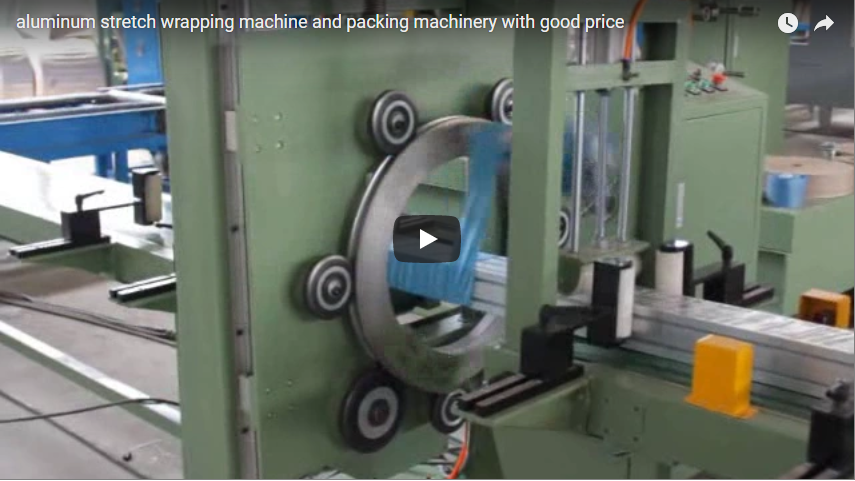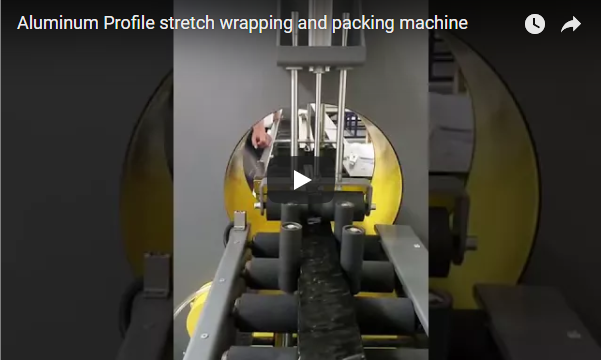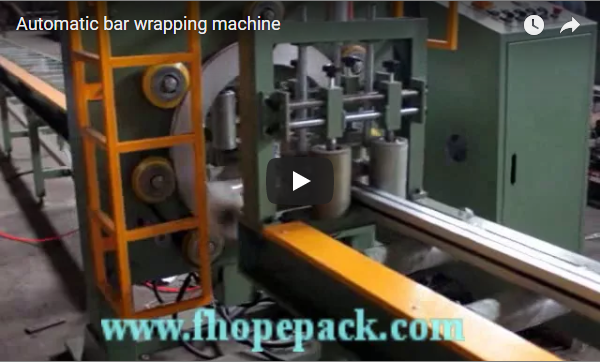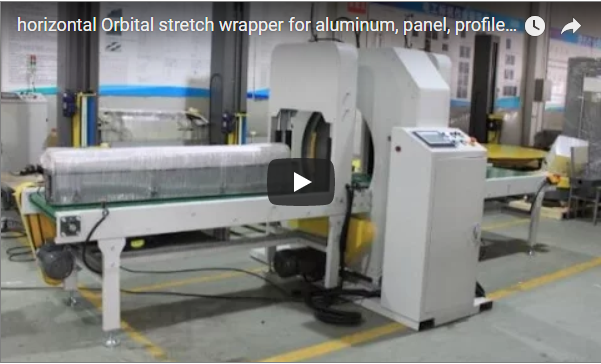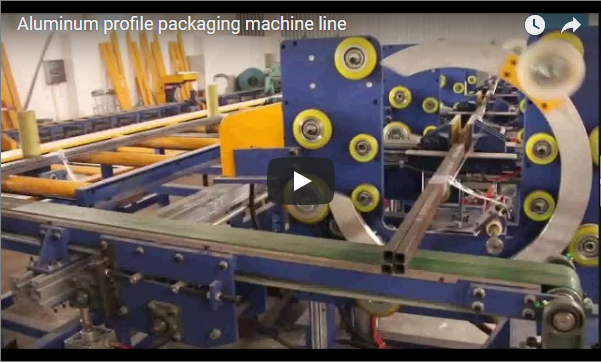Streamlining Protection: A Deep Dive into the Full-Automatic Orbital Bagging Machine for Profiles and Pipes
In the demanding world of metal fabrication and processing, ensuring the safe transport and storage of finished products like aluminum profiles and stainless steel pipes is paramount. Scratches, dents, and environmental contamination can significantly diminish the value and usability of these materials. Manual bagging, while a traditional approach, often introduces bottlenecks, inconsistencies, and increased labor costs. Addressing these challenges head-on is the full-automatic orbital bagging machine – a sophisticated solution designed for efficiency and superior product protection.
1. The Challenge: Protecting Long and Delicate Products
Manually bagging long items like aluminum extrusions or polished steel pipes presents several hurdles:
- Labor Intensity: Requires significant manpower, diverting skilled labor from core fabrication tasks.
- Inconsistency: Manual wrapping can lead to uneven tension, gaps in coverage, and variable seal quality.
- Potential for Damage: Handling during manual bagging increases the risk of scratches or abrasions.
- Throughput Limitations: Manual processes often struggle to keep pace with high-volume production lines.
- Material Waste: Inconsistent application can lead to excessive use of bagging film.
2. The Solution: The Full-Automatic Orbital Bagging System
This machine automates the entire bagging process for elongated products, integrating seamlessly into production or packaging lines. It provides a consistent, efficient, and protective packaging solution.
(Video Description: Demonstration of the full-automatic orbital bagging machine processing long profiles, showcasing the automated loading, bagging, sealing, and unloading sequence.)
3. Operational Workflow: A Step-by-Step Look
The beauty of this system lies in its automated, synchronized operation, typically managed by a Programmable Logic Controller (PLC):
- Automatic Loading: Profiles or pipes are fed onto the infeed conveyor, often from a preceding process or a buffer zone. Sensors detect the product's presence and position.
- Conveying: Motorized conveyors transport the product towards the bagging station at a controlled speed.
- Orbital Bagging/Wrapping: As the product passes through a rotating ring, a bagging film (like PE or POF) is dispensed and orbits around it, effectively encasing the product in a continuous sleeve. The orbital action ensures complete coverage even for complex shapes.
- Sealing and Cutting: Once the product is fully enveloped, integrated sealing bars (often using heat) create secure transverse seals at the leading and trailing ends. A cutting mechanism then separates the bagged product from the film supply.
- Automatic Unloading: The finished, securely bagged product is transported via an outfeed conveyor to the next station, such as bundling, labeling, or palletizing.
4. Key Features and Technical Specifications
While specific configurations vary, typical features of a high-quality orbital bagging machine include:
- Control System: PLC (Programmable Logic Controller) for reliable automation and process control, often paired with an HMI (Human-Machine Interface) touchscreen for easy operation, parameter adjustment, and diagnostics.
- Loading/Unloading: Fully automated conveyor systems synchronized with the bagging process. Options for integration with existing lines are common.
- Orbital Wrapping Ring: Precision-engineered ring supporting the film roll, designed for smooth rotation and consistent film application. Ring speed is often adjustable.
- Sealing Mechanism: Hot bar or impulse sealing systems for creating strong, reliable seals compatible with various film types. Temperature and sealing time are typically adjustable.
- Material Compatibility: Designed primarily for aluminum profiles (standard and complex shapes), stainless steel pipes, tubes, bars, and other long, rigid products.
- Film Specifications: Compatible with various bagging films, commonly Polyethylene (PE) or Polyolefin (POF), in different thicknesses. Automatic film centering and tension control are often included.
- Capacity & Speed: Packaging speed varies based on product length and ring speed, but systems can often handle significant throughput (e.g., several pieces per minute). Maximum product dimensions (length, cross-section) are key specifications.
- Safety Features: Emergency stops, safety interlocks on access doors, light curtains, and protective guarding to ensure operator safety during operation.
Parameter Example:
| Parameter | Typical Range/Value | Notes |
|---|---|---|
| Control System | PLC + HMI Touchscreen | Siemens, Allen-Bradley, Omron common |
| Max Product Length | Up to 6m, 12m, or custom | Dependent on machine model |
| Max Product Cross-Section | Varies (e.g., up to 300x300mm) | Specify required dimensions |
| Wrapping Speed | 20-60 RPM (Ring Speed) | Adjustable |
| Throughput | 3-10+ pieces/min | Depends on product length and configuration |
| Film Type | PE, POF | Specify desired film |
| Film Roll Diameter | Standard industry sizes | e.g., up to 500mm OD |
| Power Supply | 380V/50Hz/3Ph or regional equivalent | Check local requirements |
| Air Supply | 6-8 bar | For pneumatic components |
5. Benefits for Fabricators and Processors
Investing in a full-automatic orbital bagging machine delivers tangible advantages:
- Enhanced Efficiency and Throughput: Dramatically increases packaging speed compared to manual methods, eliminating bottlenecks and keeping pace with production.
- Superior Product Protection: Provides a consistent, tight wrap that shields products from dust, moisture, scratches, and handling damage during storage and transit.
- Reduced Labor Costs & Improved Safety: Frees up personnel for higher-value tasks and reduces manual handling, minimizing ergonomic risks and potential injuries.
- Consistent Quality: Automated control ensures every product is bagged to the same standard with uniform film tension and secure seals.
- Material Savings: Optimized film usage and precise cutting minimize waste compared to less controlled manual wrapping.
- Professional Presentation: Neatly bagged products enhance the perceived quality and professionalism of the supplier.
6. Common Applications
This technology is invaluable across several sectors:
- Aluminum Extrusion Plants: Protecting mill-finish, anodized, or powder-coated profiles.
- Steel Pipe and Tube Mills: Bagging stainless steel, carbon steel, or galvanized pipes/tubes.
- Window and Door Frame Manufacturers: Packaging profile components.
- Furniture Manufacturers: Protecting metal frame components.
- Plastic Profile Extruders: Bagging PVC or other plastic profiles.
- Metal Service Centers: Preparing long products for storage or shipment.
7. From the Shop Floor: Practical Considerations
Having worked with automated packaging lines, the transition to a system like this is significant. Key insights include:
- Integration is Key: Planning how the machine fits into the existing workflow (before and after) is crucial. Smooth handoffs between conveyors are essential.
- Operator Training: While automated, operators need training on the HMI, fault finding, film roll changes, and basic preventative maintenance. The PLC diagnostics are usually quite helpful here.
- Film Selection Matters: Choosing the right film type (thickness, slip properties, seal compatibility) directly impacts performance and protection levels. Testing is recommended.
- Maintenance Schedule: Like any automated equipment, adhering to the recommended maintenance schedule (lubrication, sensor checks, blade/seal bar inspection) is vital for longevity and reliability.
- Return on Investment (ROI): The justification often comes down to labor savings, reduced product damage/rejects, and increased throughput enabling faster order fulfillment. Calculating this upfront helps build the business case.
8. Choosing the Right Orbital Bagger
When selecting a machine, consider:
- Product Dimensions: Ensure the machine can handle your minimum and maximum lengths and cross-sections.
- Throughput Needs: Match the machine's speed to your production output.
- Film Requirements: Verify compatibility with your preferred bagging film.
- Level of Automation: Determine the required degree of integration (e.g., fully inline vs. near-line).
- Supplier Support: Evaluate manufacturer reputation, service availability, and spare parts access.
9. Conclusion: A Strategic Investment in Protection and Efficiency
The full-automatic orbital bagging machine represents a significant step up from manual packaging methods for aluminum profiles, steel pipes, and similar products. By automating the loading, bagging, sealing, and unloading processes under precise PLC control, it delivers substantial benefits in terms of speed, consistency, product protection, and labor optimization. For fabricators looking to enhance product quality preservation, streamline operations, and improve their bottom line, this technology is a compelling and strategic investment.

